Top Reasons Indonesia Industries Choose Pallet Inverters for Worker Safety Amid Rising Logistics Demand
As an engineer who has spent his entire career in the packing machine industry, I've seen firsthand how small changes in a production line can have a huge impact. I remember visiting a busy factory floor where workers were manually moving heavy sacks from one pallet to another. The work was slow and exhausting. You could see the physical toll it took on them. The manager confessed that back injuries were their number one safety issue, leading to constant disruptions and high insurance costs. This problem is common, but it becomes critical in a rapidly growing economy like Indonesia, where logistics demands are exploding. The pressure to move goods faster puts workers at even greater risk.
But what if you could take the most dangerous step out of the process? Imagine a machine that could lift a one-ton load, turn it, and allow for a quick, safe pallet exchange in under a minute. This is not a futuristic concept; it's what a pallet inverter does. It's a straightforward solution that directly addresses the pain of manual handling, protecting your most valuable asset—your people—while simultaneously speeding up your entire operation.
The main reason Indonesian industries are choosing pallet inverters is to protect their workers from injury as logistics demands increase. By automating the physically demanding task of load transfer, companies significantly improve worker safety. They also gain major benefits in operational speed, reduced product damage during handling, and better compliance with international shipping standards that often require pallet exchange.
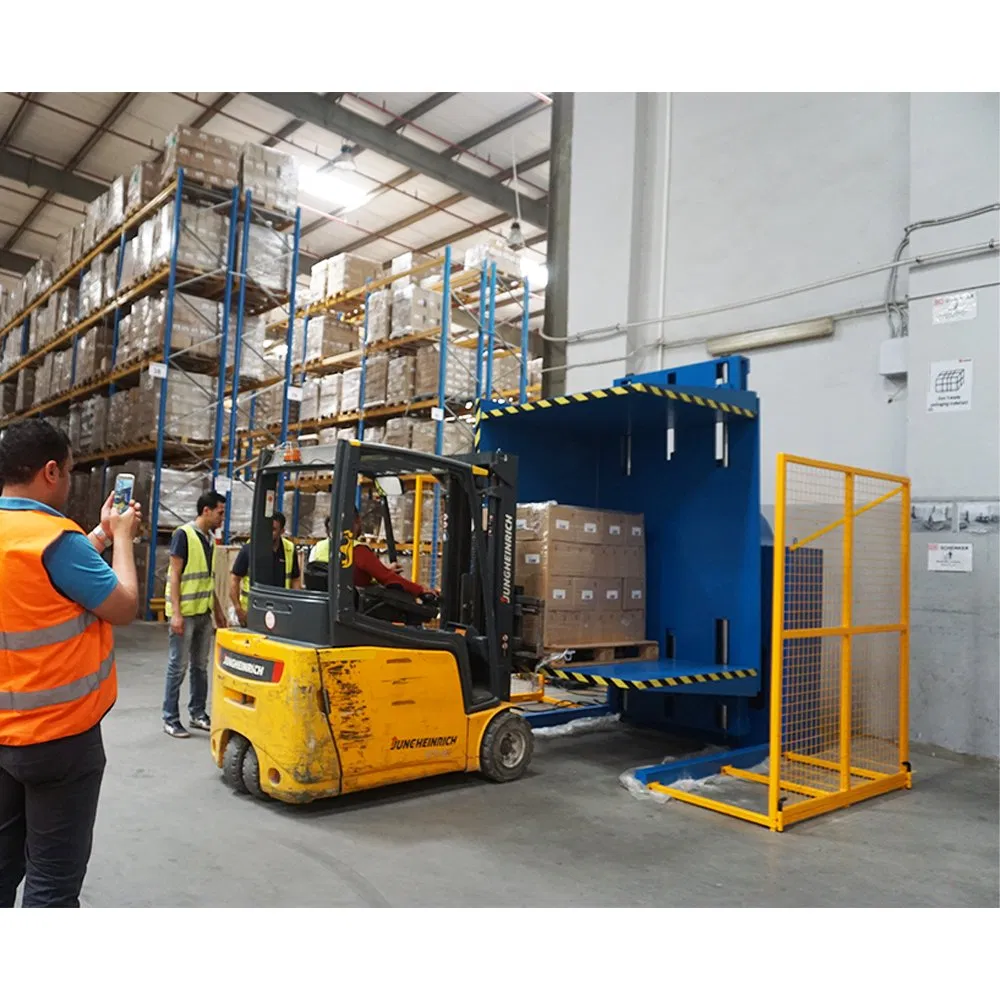
These benefits are compelling on their own. But I know that for business owners and CEOs like yourself, an investment decision needs a deeper analysis. You need to understand the mechanics of how this equipment solves your problems and what the real, tangible returns are. From my journey of building a packing machine factory from the ground up, I learned that the best investments are the ones that solve multiple problems at once. So, let's break down the specific questions I often hear from industry leaders. We will explore how a pallet inverter can be a strategic tool for safety, efficiency, and growth.
How Do Pallet Inverters Directly Enhance Worker Safety in a Busy Warehouse?
You walk through your warehouse and see your team. They are dedicated and hardworking. But you also see them lifting heavy boxes, bending awkwardly, and manually re-stacking pallets day after day. This repetitive strain is a ticking time bomb. You worry about the potential for a serious injury that could not only harm your employee but also disrupt your entire operation and lead to expensive compensation claims.
The constant risk of musculoskeletal injuries is a heavy burden for any business. It affects morale, increases absenteeism, and can damage your company's reputation as an employer. You want to create a safer environment, but the pressure to meet deadlines keeps the manual work going. Now, consider a different approach. A pallet inverter is designed to remove the human element from the most strenuous part of the job: lifting and moving heavy loads. It takes the weight off your workers' shoulders, literally.
Pallet inverters directly improve worker safety by making the manual transfer of goods obsolete. The machine automates the entire process of lifting, rotating, and repositioning a full pallet load. This eliminates the bending, lifting, and twisting motions that are the leading causes of back injuries and other musculoskeletal disorders in industrial environments.
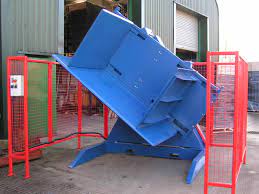
Diving Deeper into Ergonomics and Risk Reduction
From an engineering perspective, the value of a pallet inverter in safety is rooted in its ability to eliminate ergonomic hazards. Manual material handling is responsible for a huge percentage of workplace injuries, particularly those affecting the back, shoulders, and arms. Let's break down how a pallet inverter tackles this.
Eliminating High-Risk Manual Tasks
The most dangerous activities in a warehouse involve what safety professionals call "awkward postures." This includes bending down to pick up a heavy item, twisting the torso while holding a load, and reaching overhead. Each of these movements puts immense strain on the spine and supporting muscles. A pallet inverter replaces all these actions with a single, controlled mechanical process. The operator simply uses a forklift to place the pallet into the inverter and pushes a button. The machine does all the heavy work. This single change drastically reduces the risk of the most common and costly types of injuries.
Creating a Controlled and Predictable Process
Manual handling is unpredictable. A worker might get tired and use poor lifting technique. A box could slip. The weight might be unevenly distributed. These variables introduce risk. A pallet inverter standardizes the process. It is designed to handle specific load capacities with engineered precision. The clamping pressure is calibrated to hold the load securely without crushing it. The rotation is smooth and controlled. This predictability removes the element of human error and fatigue, making the entire operation safer and more reliable.
Comparing Manual vs. Automated Pallet Handling
To truly appreciate the impact, let's look at a direct comparison. I've seen this transformation in many factories I've worked with.
| Metric | Manual Pallet Transfer | Pallet Inverter Transfer |
|---|---|---|
| Primary Injury Risk | High (Back, Shoulder, Wrist Strain) | Negligible |
| Physical Effort Required | High, repetitive lifting | Low, supervisory |
| Process Time per Pallet | 15-30 minutes | 1-2 minutes |
| Risk of Dropped Product | Moderate to High | Very Low |
| Worker Fatigue | High | Low |
| Lost Time Injury (LTI) Rate | A leading contributor | Drastically reduces LTI rates |
I once consulted for a client in the beverage industry. Their team had to manually transfer cases of bottled water from wooden pallets to plastic pallets for cleanroom entry. They were experiencing at least two minor back strain incidents a month. After installing a simple freestanding pallet inverter, their injury reports for that task dropped to zero within the first year. It's a clear and direct improvement.
What is the Real ROI of a Pallet Inverter Beyond Just Safety Metrics?
When you look at the price tag of a new piece of equipment like a pallet inverter, it's natural to see it as a cost. As a business owner, you have to justify every major purchase. It is easy to think of it as just a safety device, something that is good to have but maybe not essential for the bottom line.
This way of thinking is a trap. While you are delaying the investment, you are likely losing money in other, less obvious ways. Every time a product is dropped and damaged during manual transfer, that's a loss. Every minute your trucks wait for a pallet to be re-stacked, that's a loss in efficiency. Every worker assigned to this slow, manual task could be doing something more valuable. These hidden costs add up quickly.
The solution is to look at a pallet inverter not as a cost, but as a source of savings and efficiency. The real return on investment (ROI) comes from a powerful combination of factors. It goes far beyond just the money saved on injury claims. It impacts your operational speed, product quality, and labor effectiveness, often paying for itself much faster than you might think.
The true ROI of a pallet inverter is found in a mix of operational gains. Key factors include major reductions in product damage, much faster processing and truck turnaround times, better use of your workforce on higher-value tasks, and the ability to salvage goods from broken pallets, turning a potential loss into a recoverable asset.
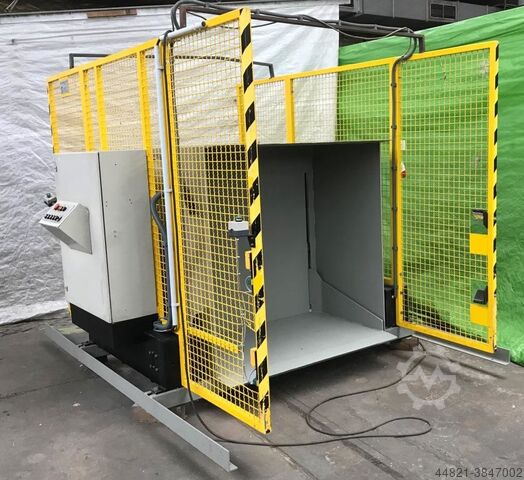
Diving Deeper into Financial and Operational Returns
As an engineer and business owner, I always focus on tangible results. A machine must pay for itself. Let's move beyond the abstract and quantify the sources of ROI for a pallet inverter. This is the kind of analysis I perform with my clients to ensure they see the full picture.
Calculating Tangible Savings
The financial benefits are not just theoretical. They can be measured and tracked. A client of mine in the food processing sector was shocked when we calculated their annual losses from just one part of their operation.
| ROI Contributor | Manual Process Cost (Annual Estimate) | Pallet Inverter Benefit |
|---|---|---|
| Product Damage | 2% of handled goods damaged ($20,000) | Damage rate reduced to <0.1% (Saving ~$19,800) |
| Labor Costs | 2 workers x 4 hrs/day x $15/hr ($31,200) | 1 worker x 1 hr/day (Saving ~$27,300 in labor hours) |
| Truck Waiting Time | 30 min extra per truck x 5 trucks/day ($ thousands in fees/delays) | Reduced to <5 min per truck (Improved efficiency, lower fees) |
| Pallet Recovery | Discarding broken pallets ($5/pallet) | Reuse good pallets, save costs |
| Worker Compensation | 1 major injury claim ($40,000+) | Risk of claim nearly eliminated |
Boosting Throughput and Unlocking Capacity
ROI isn't just about saving money; it's also about making more money. Speed is critical in logistics. A pallet inverter can process a load in about 60-90 seconds. Manually, the same task takes two workers 15 to 30 minutes. This massive increase in speed has a ripple effect across your operation.
- Faster Dock-to-Stock: Goods get from the receiving dock into your warehouse racking much faster.
- Increased Shipping Velocity: Your outbound team can prepare shipments more quickly, meeting tighter deadlines and potentially increasing the number of trucks you can service per day.
- Reduced Bottlenecks: Manual pallet exchange is often a major bottleneck. Automating it smooths the flow of materials through your entire facility.
This increase in throughput means you can handle more volume without adding more staff or expanding your facility's footprint. You are unlocking hidden capacity in your existing operation. For a growing business, this is incredibly valuable.
Why is Pallet Exchange a Growing Concern for Indonesian Exporters?
Imagine you have a large shipment ready to go. Your products are perfectly stacked on your standard, in-house wooden pallets. But then you get the shipping order. Your customer in Europe requires everything to be on sanitized plastic pallets. Or your client in the US will only accept goods on their specific rental pallets. Now what?
You are faced with a huge logistical problem. Your team has to manually unload every single box from your pallets and re-stack them onto the new ones. This process is incredibly slow, and it's where things go wrong. Products get dropped, boxes get crushed, and the shipment gets delayed. Any damage that happens during this transfer is your responsibility and your loss. For Indonesian companies looking to compete on the global stage, this is not just an inconvenience; it's a major barrier to efficiency and profitability.
The solution is to make this exchange process fast, safe, and reliable. A pallet inverter is the right tool for this job. It allows you to switch an entire pallet load from one type of pallet to another in a single, automated cycle. This ensures you meet your customer's requirements without risking your product or your timeline. It turns a major headache into a simple, routine task.
Pallet exchange is a critical issue for Indonesian exporters due to strict international regulations like ISPM 15, which governs wood packaging material. Additionally, many global customers demand products arrive on specific pallets, such as plastic or pooled pallets from CHEP or LPR, for hygiene or logistical reasons. A pallet inverter provides a fast and safe way to make this necessary transfer.
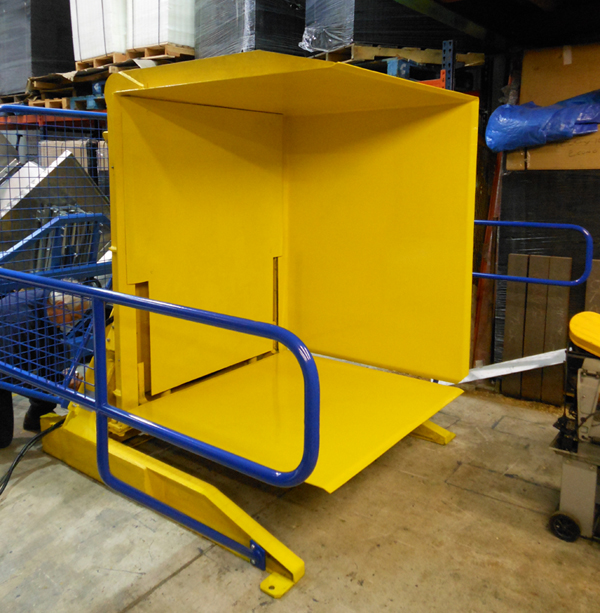
Diving Deeper into Global Logistics and Compliance
When I first started my factory, most of our business was local. But as we grew, we began exporting. That's when I learned how complex international logistics can be. The rules are strict, and a small mistake with something like a pallet can cause a whole container to be rejected. For a market like Indonesia that is deeply integrated into global supply chains, understanding these rules is essential.
Navigating ISPM 15 and Phytosanitary Rules
ISPM 15 is an international standard for treating wood packaging material (WPM), including wooden pallets. It requires that wood be heat-treated or fumigated to kill insects and prevent them from spreading across borders. Pallets must be stamped with an official mark to prove compliance. If you ship on an untreated or improperly marked wooden pallet, customs can reject your entire shipment. Many companies avoid this risk by switching to alternative pallets for export.
- Plastic Pallets: They are exempt from ISPM 15, durable, and easy to clean.
- Presswood Pallets: Made from wood fibers and resin, they are also exempt and are often lightweight.
A pallet inverter allows a company to use sturdy, reusable wooden pallets for internal operations and then quickly switch to a compliant plastic or presswood pallet just for the export leg.
Meeting Diverse Customer Requirements
Beyond government regulations, your biggest customers have their own rules. Large retailers and manufacturers often operate "pallet pools," where they use standardized rental pallets (like those from CHEP or LPR). They do this to streamline their own automated warehouses. If you want to be their supplier, you must deliver your goods on their pallets.
| Pallet Scenario | The Challenge | The Pallet Inverter Solution |
|---|---|---|
| In-House to Export | Need to switch from internal wooden pallet to ISPM-15 compliant plastic pallet. | Quick, safe transfer of the entire load without manual re-stacking. |
| Supplier to Customer | Supplier uses standard pallets; customer requires goods on CHEP pallets. | Allows easy transfer onto the required blue rental pallet before shipping. |
| Damaged Pallet | A pallet is broken in transit or in the warehouse, risking product safety. | Safely invert the load to replace the broken pallet and salvage the goods. |
For Indonesian companies, the ability to be flexible and meet any customer's pallet requirement is a significant competitive advantage. It shows you are a professional, capable partner. Using a pallet inverter makes this flexibility possible without adding huge labor costs or risks.
My Insights: How to Choose the Right Pallet Inverter for Your Specific Needs?
So, you are seeing the benefits. A pallet inverter can improve safety, boost ROI, and solve your pallet exchange problems. Now comes the practical question: which one is right for you? When you start looking, you will find many different models. There are freestanding units, inline automated systems, models for cold storage, and machines with different clamping mechanisms. The choice can feel overwhelming.
I have seen companies make the wrong choice. They buy a machine that is too small for their loads or too slow for their throughput needs. Or they install a model that isn't suited for their environment, and it breaks down. This is a costly mistake. It not only wastes the initial investment but also creates a new set of problems for your operation.
As an engineer who has designed, built, and installed these machines for years, I want to give you a clear path forward. The key is to stop looking at machine features first. Instead, start by analyzing your own operation. The right pallet inverter is the one that fits your product, your workflow, and your space perfectly. Let me share the core questions you must answer to make the right choice.
To choose the right pallet inverter, you must first analyze your specific operational needs. You need to carefully consider your typical load characteristics like weight and stability, the speed you require, the physical space you have available, your operating environment, and how much automation your process truly needs. Answering these questions first will lead you to the perfect machine.
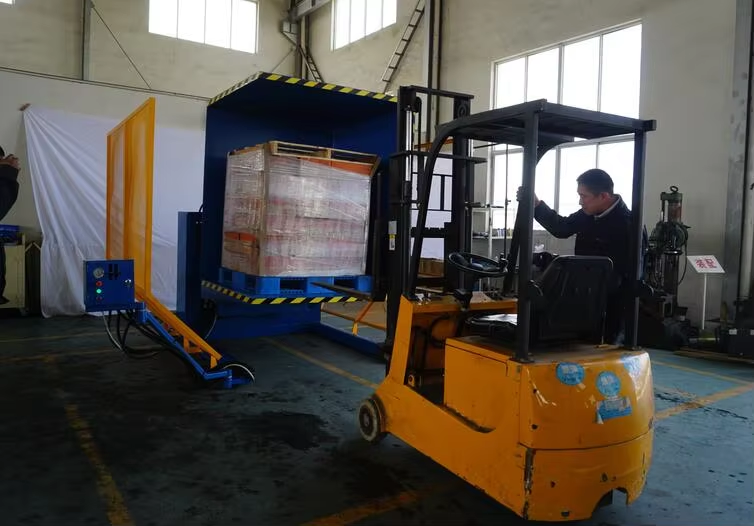
Diving Deeper into the Selection Process
Choosing a pallet inverter is like choosing any critical piece of machinery. A thorough analysis upfront will save you from major headaches later. I guide my clients through a simple but effective evaluation process. Let's walk through it.
Step 1: Analyze Your Load
This is the most important factor. Everything starts with the product you are handling.
- Weight and Dimensions: What is the maximum weight of your pallet loads? What are their typical length, width, and height? You need a machine rated for your heaviest and largest loads, with a small buffer for safety.
- Load Stability: Are you handling solid boxes, bags of powder, open-top bins, or fragile vials? The stability of your load determines the type of clamping system you need. A machine for robust boxes can use simple pressure plates. A machine for delicate goods may need adjustable pressure sensors or even 180-degree inversion to use gravity instead of force.
- Product Type: Are you in the food or pharmaceutical industry? If so, you may need a stainless steel or "wash-down" rated machine to meet hygiene standards.
Step 2: Define Your Workflow and Throughput
How will the machine fit into your daily operations?
- Throughput Needs: How many pallets do you need to invert per hour or per day? A low-volume operation might be perfectly fine with a basic, forklift-loaded freestanding unit. A high-volume distribution center might need a fully automated, inline system with conveyors that feed pallets directly into the inverter.
- Available Space: Where will the machine go? You need to measure the available floor space, but also consider the overhead clearance needed for rotation and the access space required for a forklift to load and unload it. Freestanding models have a smaller footprint, while inline systems require more space.
Selection Checklist: Matching Machine to Mission
I've put this into a simple table to help you organize your thoughts.
| Your Need | Key Question(s) to Ask | Machine Feature to Look For |
|---|---|---|
| Load Handling | What is my max weight? Is my product fragile? | Load Capacity, Adjustable Clamping Pressure |
| Environment | Will it be in a cold freezer? A wet area? A cleanroom? | Freezer-rated components, Stainless Steel Construction |
| Speed/Volume | How many pallets per hour do I need to process? | Cycle Time, Level of Automation (Manual vs. Inline) |
| Operation | How will workers interact with it? Forklift only? | Loading Method (Forklift, Pallet Jack), Controls (Buttons, PLC) |
| Footprint | How much space do I have? | Machine Dimensions, Freestanding vs. Conveyor-fed models |
By systematically going through these questions, you move from a confusing list of options to a clear specification. You are no longer just buying a machine; you are investing in a tailored solution for your specific operational challenge. This is the path to a successful project.
Conclusion
Investing in a pallet inverter is a strategic move. It protects your people, streamlines your logistics, and cuts hidden costs, securing your operational future in a demanding market.



